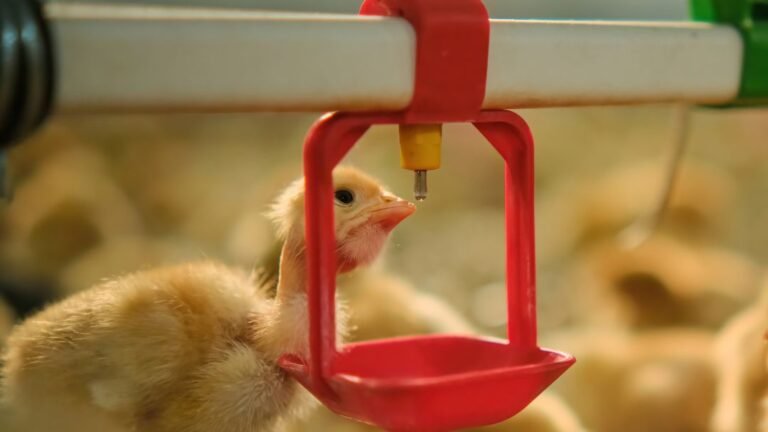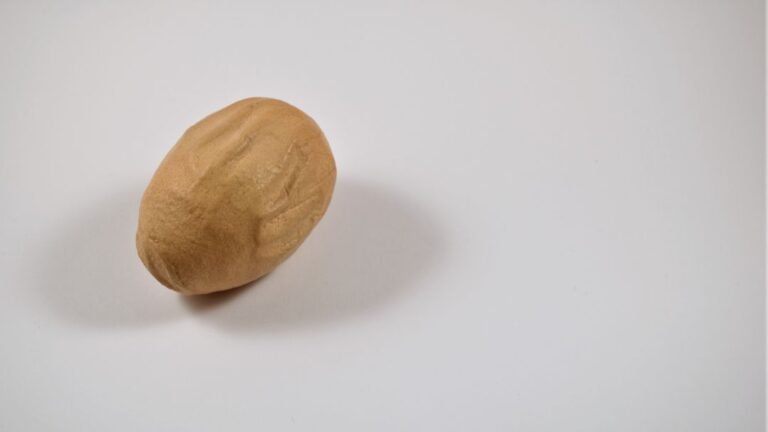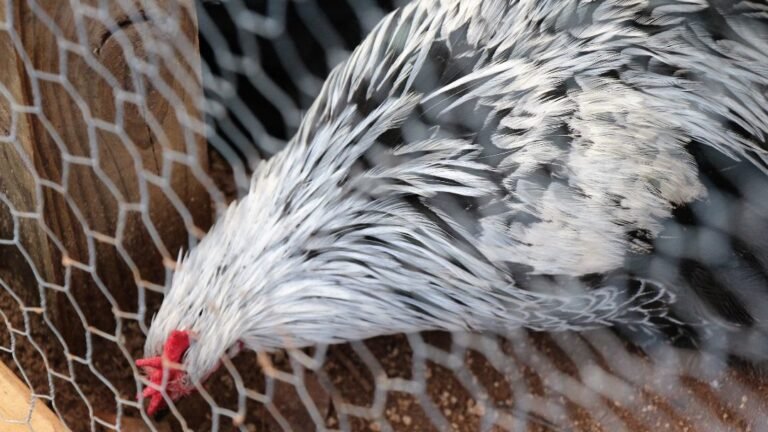To identify the sex of baby chicks, you can use the “vent sexing” method or the “feather sexing” method. The vent sexing method involves examining the cloaca, a small opening under the tail, while the feather sexing method relies on differences in feather growth rate between males and females.
Both methods require experience or professional assistance to accurately determine the sex of baby chicks. Determining the sex of baby chicks is crucial for poultry farmers who want to manage their flocks effectively. While it may seem daunting, there are methods available to accurately identify the sex of chicks.
Vent sexing and feather sexing are two common techniques used for this purpose. Vent sexing entails visually examining the cloaca, a small opening under the tail, to discern the chick’s gender. Conversely, feather sexing relies on disparities in feather growth rates between males and females.
These methods demand expertise or professional guidance to ensure accurate identification. By utilizing these techniques, farmers can efficiently separate males and females, enabling effective management of their poultry operations.
Understanding The Basics Of Chick Sexing
Learn how to identify the sex of baby chicks through the basics of chick sexing. Discover the techniques to accurately determine the gender of your chicks without relying on guesswork.
What Is Chick Sexing?
Chick sexing is the process of determining the gender of baby chicks. This skill is essential for poultry farmers and hobbyists to ensure the right balance in their flocks. While it may seem challenging at first, understanding the basics of chick sexing can help you identify the males and females with accuracy.
The Importance Of Identifying The Gender Of Baby Chicks
Determining the gender of baby chicks is crucial for several reasons:
- Flock management: Knowing the sex of chicks allows you to plan their future effectively. You can separate the males from the females to prevent aggressive behavior, reduce the risk of inbreeding, and optimize flock growth.
- Egg production: For commercial poultry farmers, identifying female chicks is essential for maximizing egg production. This knowledge enables them to focus resources on raising the females to maturity and avoid wasting time, energy, and money on the male chicks.
- Breeding programs: If you’re involved in selective breeding or maintaining specific poultry breeds, accurately determining the gender of chicks is crucial. Breeding programs rely on careful selection of males and females according to desired traits and characteristics.
The Challenges In Determining The Gender Of Chicks At A Young Age
Identifying the gender of baby chicks can be challenging, especially when they are young. Some of the challenges include:
- Lack of visible characteristics: Baby chicks of most breeds do not exhibit visible, distinguishing characteristics until they are a few weeks old. At hatching, both male and female chicks generally look similar, making it hard to differentiate their genders.
- Breed variations: Different poultry breeds may have unique characteristics that make gender identification difficult. The absence of universal indicators can create confusion during the early stages of chick development.
- Experience and expertise: Chick sexing requires knowledge and skill. It takes time and practice to become adept at sexing chicks accurately. Even experienced individuals may occasionally make mistakes due to variations in breed or external factors.
- Non-visual methods: Manual chick sexing methods, such as vent sexing, are invasive and require professional expertise. These methods are best left to trained individuals who can ensure the chicks’ safety and well-being during the process.
Remember, chick sexing becomes easier as chicks mature and display more visible gender-specific traits. By understanding the fundamentals and staying patient, you can improve your ability to identify the sex of baby chicks accurately.

Visual Cues For Identifying Male Chicks
When it comes to determining the sex of baby chicks, visual cues play a crucial role. By observing specific physical characteristics, feather patterns, and leg and comb development, you can separate the male chicks from the females. Let’s delve into these visual cues for identifying male chicks:
Physical Characteristics Specific To Male Chicks
- Larger size: Males tend to be larger in size compared to their female counterparts.
- Well-defined neck feathers: Male chicks have more prominent neck feathers, which are thicker and longer.
- Squared-off saddle feathers: Male chicks have saddle feathers that form a squared-off pattern at the base of their tails.
- Tapered waistline: A male chick’s abdomen and waistline are more tapered compared to female chicks.
Examining Feather Patterns And Colors
- Wing feather length: Males generally have longer wing feathers, especially on the primary feathers.
- Darker and more defined patterns: Male chicks may exhibit darker and more defined feather patterns compared to females, especially on the wings and back.
- Noticeable wing bowing: Male chicks may show slight bowing of the wings due to their longer wing feathers.
Differentiating Male Chicks Based On Leg And Comb Development
- Leg thickness: Male chicks tend to have thicker legs compared to their female counterparts.
- Early development of spurs: Male chicks may start developing small, bony bumps called spurs on the inside of their legs around 8 to 10 weeks of age.
- Comb size and color: Male chicks usually have larger and redder combs compared to females. This difference is noticeable as early as 4 to 6 weeks of age.
Using these visual cues, you can confidently identify male chicks based on their physical characteristics, feather patterns, and leg and comb development. Remember, these cues may not be definitive indicators, especially in the early stages, so it’s advisable to combine visual cues with other methods such as DNA testing to determine the sex of baby chicks accurately.
Visual Cues For Identifying Female Chicks
Female chicks can be identified through various visual cues that set them apart from their male counterparts. Here are some physical characteristics, unique feather patterns and colors, and leg and comb development attributes that can help you determine the sex of baby chicks:
Physical Characteristics Specific To Female Chicks
- Smaller in size and more delicate compared to males.
- Rounded and plump bodies.
- Rounded heads with less pronounced beaks.
- Shorter wings and tail feathers.
- Generally more docile and quieter in nature.
Identifying Unique Feather Patterns And Colors In Female Chicks
Female chicks often exhibit distinct feather patterns and colors that differ from male chicks. Look for the following visual cues:
- Uniform feather coloration: Female chicks often have consistent feather colors throughout their bodies, with minimal variations.
- Lighter shades: Females tend to have lighter-colored feathers, such as pale yellows, whites, or light browns.
- Subtle patterns: Look for subtle patterns like stripes or spots on their feathers, although these may not always be present.
How To Observe Leg And Comb Development To Determine Female Chicks
The development of a chick’s legs and comb can provide further hints about their sex. Consider the following indicators:
- Slower leg development: Female chicks usually have slower leg growth compared to males.
- Straighter and thinner legs: Females tend to have straighter and thinner legs, while males may have thicker and more muscular legs.
- Smaller combs: Female chicks develop smaller and less pronounced combs on top of their heads compared to males, whose combs tend to be larger and more prominent.
By paying close attention to these visual cues, you can increase your chances of accurately identifying female chicks. Remember, practice and experience will further refine your skills in sexing baby chicks.
Non-Visual Techniques For Determining Chick Gender
Looking to identify the sex of baby chicks without relying on visual cues? You’re in luck! There are several non-visual techniques you can use to determine the gender of your fluffy little friends. Read on to discover these methods and their effectiveness.
Vent Sexing: What It Is And How It’s Done
Vent sexing is a commonly used technique that involves examining the vent area of a chick to determine its gender. Here’s a breakdown of what vent sexing entails and how it can be done:
- Vent sexing: This technique involves gently squeezing the chick’s belly to expose the vent, which is the external opening for reproductive and excretory systems.
- Distinguishable characteristics: By examining the size, shape, and distance of the vent from the anus, experts can identify certain characteristics that are indicative of the chick’s gender.
- Performed by professionals: Vent sexing is most often done by experienced hatchery workers or poultry experts who have undergone extensive training to accurately determine chick gender.
- Accuracy: When performed correctly, vent sexing can have a high degree of accuracy, often reaching around 90-95%.
The Use Of DNA Testing To Accurately Determine Chick Gender
While vent sexing is a widely used method, DNA testing provides a more definitive and accurate way to determine chick gender. Here’s what you need to know about DNA testing for chicks:
- Genetic analysis: DNA testing involves analyzing the chick’s genetic material to identify specific chromosomes that determine its sex.
- Reliability: This method is highly reliable and eliminates any guesswork associated with visual or non-visual techniques.
- Efficiency: DNA testing can be performed quickly and easily using a small blood sample or tissue swab from the chick.
- Cost consideration: While DNA testing provides accurate results, it can be more expensive than other methods. It is often reserved for special breeding programs, rare breeds, or situations where certainty is crucial.
Other Methods Like Wing Feather Length And Voice Recognition
Apart from visual and DNA-based techniques, there are a few other methods that can be used to determine chick gender. These alternative methods may not be as accurate as vent sexing or DNA testing, but they can provide some useful insights.
Here are a couple of those methods:
- Wing feather length: In some breeds, wing feather length can help distinguish between male and female chicks. Generally, the wing feathers of male chicks are longer and more developed compared to female chicks of the same age.
- Voice recognition: Female chicks have a tendency to chirp more frequently and with a higher pitch than their male counterparts. By closely observing their vocalizations, you may be able to make an educated guess about their gender.
Remember, while these alternative methods may give you some indication of chick gender, they are not foolproof and should be used with caution.
So, whether you opt for vent sexing, DNA testing, or alternative methods, determining the sex of baby chicks without visual cues is indeed possible. Choose the method that suits your needs, and soon you’ll have a clearer understanding of the gender distribution in your adorable flock.
Expert Tips And Tricks For Accurate Chick Sexing
Learn expert tips and tricks for accurately identifying the sex of baby chicks. Discover how to easily determine the gender of your chicks with these valuable insights.
The Art Of Observation: How To Keenly Observe Chick Behaviors And Traits
Observation is a crucial aspect when it comes to identifying the sex of baby chicks. By keenly observing their behaviors and traits, you can make an accurate determination. Here are some expert tips and tricks to help you master the art of observation:
- Behavioral cues: Pay attention to how the chicks interact with one another. Males often exhibit more dominant behavior, such as pecking or pushing others. Females tend to be less aggressive and more focused on exploration or foraging.
- Wing feather growth: Observe the wing feathers closely. Male chicks typically have their primary wing feathers growing at a faster rate compared to females. This difference can be noticeable within the first few weeks after hatching.
- Combs and wattles: Around the age of 4-6 weeks, you can start examining the combs and wattles of the chicks. Males usually have larger and more pronounced combs and wattles, while females have smaller and less developed ones.
- Body size and shape: Generally, male chicks tend to be larger and more robust compared to females. Pay attention to any noticeable differences in size and body shape as they grow.
Seeking Assistance From Experienced Breeders And Professionals
While observation is a valuable skill, seeking guidance from experienced breeders and professionals can significantly enhance your accuracy in sexing baby chicks. Here’s how you can benefit from their expertise:
- Hands-on experience: Breeders and professionals have spent years working with chicks and have developed a keen eye for identifying their sex. They can provide practical tips and insights that may not be readily apparent to a beginner.
- Specialized knowledge: These experts have an in-depth understanding of specific breed characteristics and can help you navigate the nuances of sexing different varieties. From bantams to larger breeds, their knowledge can be invaluable in determining the sex of chicks.
- Networking opportunities: Connecting with experienced breeders and professionals allows you to join a community of like-minded individuals. You can exchange knowledge, seek advice, and learn from their experiences, creating a support system as you delve into the world of chick sexing.
Common Mistakes To Avoid When Sexing Baby Chicks
Accurate chick sexing requires attention to detail and avoiding common pitfalls that can lead to erroneous determinations. Here are some mistakes to steer clear of:
- Relying solely on visual traits: While visual cues are important, they can sometimes be misleading. It’s crucial not to solely rely on one characteristic, such as feather color, as an indicator of sex. Combining multiple observations is key for accuracy.
- Sexing too early: Trying to determine the sex of chicks immediately after hatching is often unreliable. It’s best to wait until they are a few weeks old when their characteristics become more distinguishable.
- Inattentive observation: Rushing through the process or not paying close attention can lead to incorrect sex. Take your time, be patient, and focus on observing various behavioral and physical traits.
- Neglecting breed variations: Different breeds may exhibit different characteristics when it comes to sexing. Familiarize yourself with the specific traits of the breed you are working with to avoid confusion or misidentification.
By mastering the art of observation, seeking guidance from experienced breeders, and avoiding common mistakes, you can become proficient in accurately sexing baby chicks. Remember, practice makes perfect, so keep honing your skills and learning from the experts in order to become better at this fascinating endeavor.
Conclusion
Identifying the sex of baby chicks can be a challenging yet crucial task for poultry owners. By using various methods such as vent sexing, feather sexing, and color sexing, you can increase your accuracy in determining the male or female chicks.
Vent sexing involves examining the vent area, while feather sexing relies on the difference in wing feather growth between genders. Color sexing utilizes specific plumage colors to differentiate males and females. It is important to note that these methods require experience and precision to avoid harm to the chicks.
Regularly monitoring the growth and development of your chicks also helps in confirming their sex. Remember, accurately identifying the sex of baby chicks is essential for proper management of your flock and maximizing their potential for egg or meat production.
So, stay attentive to the signs and enjoy your journey of raising healthy and thriving chickens.




